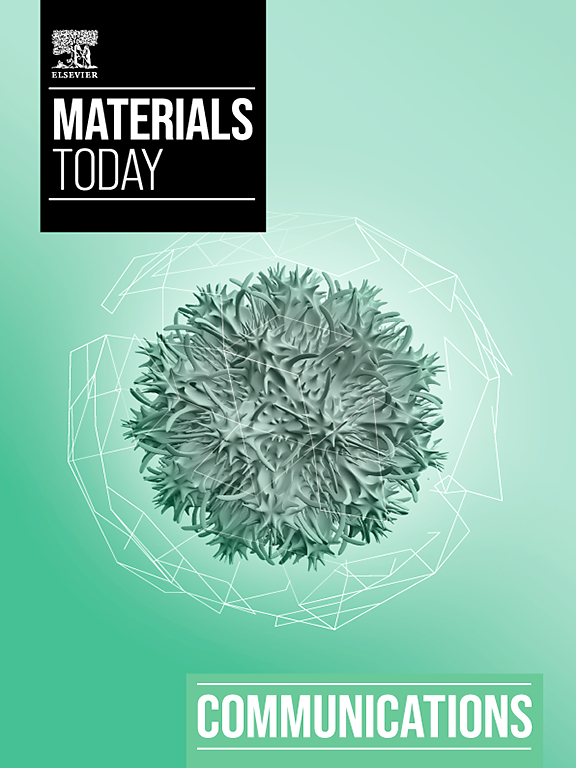Effects of Cr3C2 addition on microstructure and corrosion properties of Cr3C2/15–5PH composite coatings on 12Cr13 by laser cladding
IF 4.5
3区 材料科学
Q2 MATERIALS SCIENCE, MULTIDISCIPLINARY
引用次数: 0
Abstract
The application of laser cladding technology to prepare iron-based composite coatings has significant advantages in improving the surface properties of 12Cr13 stainless steel. 15–5PH composite coatings reinforced with CrC particles of different contents (0–25 wt%) were prepared on the 12Cr13 surface by the coaxial powder feeding laser cladding system. The microstructure, phase composition, element distribution, corrosion resistance and corrosion mechanism of the composite coatings were analyzed and studied by optical microscope, scanning electron microscope, X-ray energy dispersive spectrometer, X-ray diffractometer and electrochemical workstation. The results indicated that the CrC/15–5PH composite coatings exhibited good macroscopic morphology and dilution rate under appropriate laser cladding process parameters. The addition of CrC particles changed the main phase from -Fe to -Fe and formed new carbide phases (MC and CrC). The CrC/15–5PH composite coatings exhibited a typical microstructure with rapid solidification characteristics, and the addition of CrC significantly changed the grain size. The distribution of Fe, Ni, and Cr elements in the composite coatings was uniform, and the relative content of Cr elements increased and remained at high level. The 15-5PH composite coating with 15 wt% CrC exhibited a lower corrosion current density and higher impedance modulus values. The surface of this composite coating had no obvious corrosion pits, and the passive film effectively retarded the further corrosion by the Cl- ions on the surface during the electrochemical corrosion process. By preparing a 15–5PH composite coating with 15 wt% CrC on the surface of 12Cr13, the corrosion resistance of the surface can be effectively improved.添加 Cr3C2 对激光熔覆 12Cr13 上 Cr3C2/15-5PH 复合涂层的微观结构和腐蚀特性的影响
应用激光熔覆技术制备铁基复合涂层在改善 12Cr13 不锈钢表面性能方面具有显著优势。通过同轴送粉激光熔覆系统在 12Cr13 表面制备了不同含量(0-25 wt%)CrC 颗粒增强的 15-5PH 复合涂层。通过光学显微镜、扫描电子显微镜、X 射线能量色散光谱仪、X 射线衍射仪和电化学工作站对复合涂层的微观结构、相组成、元素分布、耐蚀性和腐蚀机理进行了分析和研究。结果表明,在适当的激光熔覆工艺参数下,CrC/15-5PH 复合涂层表现出良好的宏观形貌和稀释率。CrC 颗粒的加入使主相从 -Fe 转变为 -Fe,并形成了新的碳化物相(MC 和 CrC)。CrC/15-5PH 复合涂层表现出典型的微观结构,具有快速凝固的特点,CrC 的加入显著改变了晶粒大小。复合涂层中铁、镍和铬元素的分布均匀,铬元素的相对含量增加并保持在较高水平。含有 15 wt% CrC 的 15-5PH 复合涂层显示出较低的腐蚀电流密度和较高的阻抗模量值。这种复合涂层的表面没有明显的腐蚀坑,在电化学腐蚀过程中,被动膜有效地阻止了表面 Cl- 离子的进一步腐蚀。通过在 12Cr13 表面制备含有 15 wt% CrC 的 15-5PH 复合涂层,可以有效提高表面的耐腐蚀性。
本文章由计算机程序翻译,如有差异,请以英文原文为准。
求助全文
约1分钟内获得全文
求助全文
来源期刊

Materials Today Communications
Materials Science-General Materials Science
CiteScore
5.20
自引率
5.30%
发文量
1783
审稿时长
51 days
期刊介绍:
Materials Today Communications is a primary research journal covering all areas of materials science. The journal offers the materials community an innovative, efficient and flexible route for the publication of original research which has not found the right home on first submission.
 求助内容:
求助内容: 应助结果提醒方式:
应助结果提醒方式:


